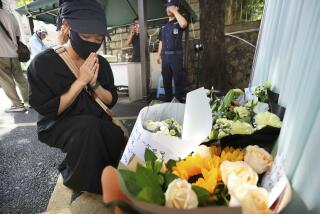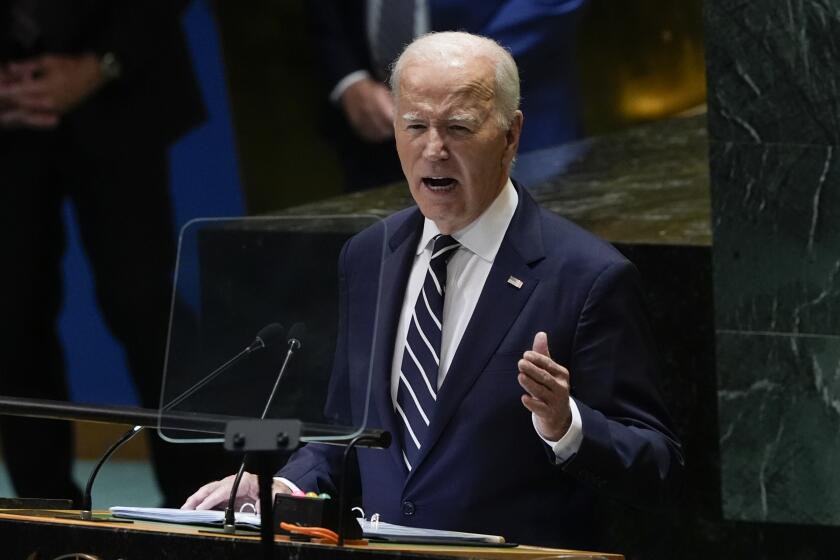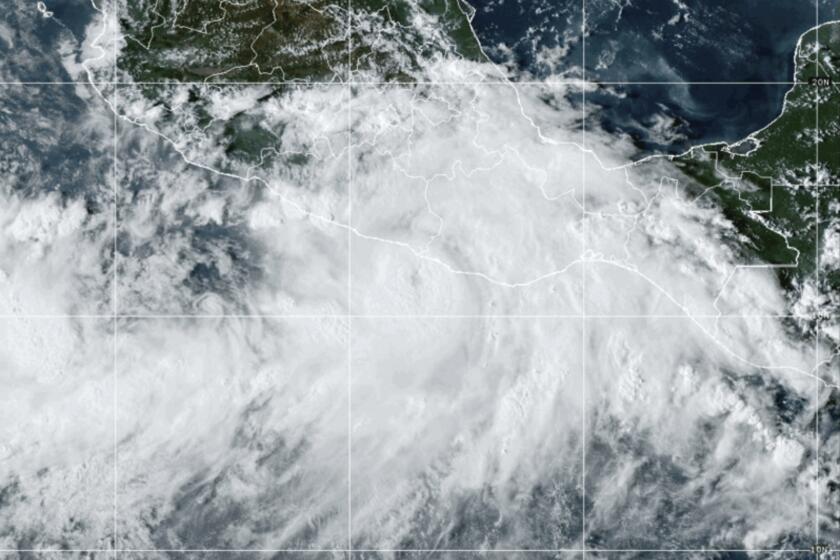Temperature Clouds Danger of Ozone Hole
The worst of the ozone hole has pulled back once more to Antarctica this southern spring, leaving behind a shadow of uncertainty for people living at the bottom of the Americas.
How many will develop skin cancer? How many more decades must their children live with dangerous ultraviolet rays? Will the global treaty to save the ozone survive until then?
The people of wind-blown Punta Arenas, like the local evergreens forever bent eastward from westerly gusts, are adjusting to the intense radiation that pours each year through the gap in the ozone layer. At least that’s what some say.
“People are better informed. They’re buying more sun block and putting it on their children,” pharmacist Gerardo Leal said.
“They’ve gotten used to it,” taxi driver Rene Bahamonde assured a visitor. But on a “red alert” day when UV rays could have damaged eyes, his dark glasses sat unused.
And local health chief Dr. Lidia Amarales said many of the 150,000 Punta Arenans took few precautions against a damaging sun as they went about their business on the streets that slope downward to the broad, chill waters of the Strait of Magellan.
The reason is simple: It’s cool here. “When it’s 30 degrees (86 Fahrenheit) somewhere, people don’t go out into the sun. Here, with 13 degrees (55 Fahrenheit), they go outside,” Amarales said.
This is a gray, drizzly corner of South America, but clouds are no protection against UV. The temperature rarely exceeds 70 Fahrenheit and “without the heat, they don’t ‘feel’ the radiation,” Amarales said. “We need to change habits.”
The stratosphere’s layer of ozone, a form of oxygen, filtered out almost all the sun’s cancer-causing ultraviolet-B rays for millennia. But in the 1970s, scientists warned that artificial chemicals such as chlorofluorocarbons (CFCs), used in aerosol sprays and refrigerants, were destroying ozone through chain reactions high in the skies. By the 1980s, satellite images showed that an “ozone hole” had formed over Antarctica.
Air currents and intense cold in the polar region, plus chlorine from CFCs, created a vast expanse of ozone-thin atmosphere that briefly reached the tip of South America each spring. Ozone here was found in October 1992 to have thinned to 147 Dobson units, less than half the normal 333. Ultraviolet radiation, in its most damaging wavelengths, multiplied many times.
The world’s nations signed the Montreal Protocol in 1987, phasing out some CFCs and other ozone-damaging compounds. Chlorine has now declined in the lower atmosphere since the mid-1990s, and the rate of growth of bromine, another targeted chemical, has slowed.
It will take decades to purge the atmosphere. Experts watch yearly for positive signs and, in fact, this September’s maximum ozone hole, at 8 million square miles, was markedly smaller than last year’s huge 11-million-square-mile hole, although similar in size to the one in 2002.
But climatologist Henk Eskes, a leading ozone analyst, cautioned that climatic changes make it hard to draw conclusions. “It’s still very difficult to say that it’s really at a turning point. There’s a lot of variability, from one year to the next, because of wind patterns and dynamical situations,” he said from De Bilt, Netherlands.
Punta Arenas’ own expert, Claudio Casiccia, is equally noncommittal. “If this trend continues for four, five, six years, then I think that’s a sign the ozone is recovering,” said the Chilean, who monitors the skies via sophisticated instruments on the roof of his Ozone Laboratory at the University of Magallanes.
Computer models suggest that ozone should recover globally by 2050, he said. “But global ozone is one situation” -- it was depleted by 6% over the United States, for example -- “and Antarctica is another situation.”
Casiccia and others worry that unforeseen new compounds might damage the ozone shield. And they are troubled by the granting of exemptions from the Montreal Protocol. On Nov. 26 in Prague, Czech Republic, a dozen nations, including the United States, Canada and some in Europe, won continued exemptions for use of methyl bromide, an ozone-depleting agricultural pesticide that was to have been phased out this year.
Chemist Mario Molina, who shared a 1995 Nobel prize for identifying the ozone threat, says substitutes are available. “Any exemptions for further emissions will delay the recovery of the ozone layer,” he said from Cambridge, Mass.
Environmentalists at the Prague meeting worried that continued exceptions could undermine the treaty by discouraging poorer countries from meeting their deadlines -- to end CFC use by 2010, for example.
In Punta Arenas, ozone is a here-and-now concern for Dr. Jaime F. Abarca, the city’s lone dermatologist, who with Casiccia’s help conducted the only detailed studies of local sunburns, skin cancer and UV-B levels.
Abarca reported that incidence of skin cancer grew from 65 cases between 1987 to 1993 to 108 in the next seven years. He says additional research, with international aid, is needed.
The annual shrinking of the hole -- the area where ozone drops below 220 Dobson units -- doesn’t mean that the danger ends for Punta Arenas. Even in December, below-normal ozone levels combine with a higher-angled, more direct sun to produce “red alert” days, announced via 131 signs at schools, offices and other key points, modeled on a traffic light showing alert levels ranging from green to violet.
Still, few people on the streets wear dark glasses or shady hats.
Fernando Carbacho wears his $100 UV-guard sunglasses rain or shine. “But not everyone can afford good glasses,” said the retired soldier, 64. Besides, “people are contrary. They know what the problem is. They just haven’t changed their habits.”
More to Read
Sign up for Essential California
The most important California stories and recommendations in your inbox every morning.
You may occasionally receive promotional content from the Los Angeles Times.










